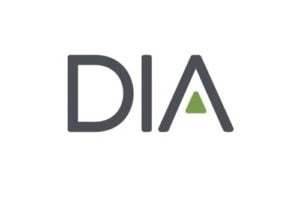Writing in the special December 2022 edition of DIA’s Global Forum magazine, Eli Lilly’s Mark Mayer, Pfizer’s Nick Sykes and Julie O’Brien, and the EFPIA’s Sini Eskola, Magda Chlebus, and Chloé Garay look at the EU regulatory system’s resourcing challenges and call for long-term multi-stakeholder engagement to help resolve them.
The European Union (EU) regulatory system has been a model of collaboration and innovation over many decades. In the current environment of rapidly advancing science, growing demands on data science expertise, and geopolitical changes, insufficient resources limit the EU regulatory system’s global competitiveness. This hinders the expertise-based decision making necessary to deliver new medicines for EU patients as effectively and efficiently as possible.
For example, data from 2021 demonstrates that it took 428 days to approve a new active substance in the EU, compared to 245 days in the USA, 301 in Canada and in Japan, and 350 in Australia. Since 2020, even as the numbers of requests to receive scientific advice have increased, the research-based pharmaceutical industry represented by EFPIA has reportedly experienced delays of between one and two months for scientific advice, impacting the ability to rapidly move forward development plans in the EU.
During DIA Europe 2022, it was repeatedly voiced that “the system suffers from resource issues at EU member state agencies that mean the European Medicines Agency’s human drugs committee, the CHMP, cannot do its job properly, according to CHMP chair Harald Enzmann” (Schofield, “Top EU Regulator Attacks Complexity & Duplication In European System”; Pink Sheet, 14 April 2022).
The pharmaceutical strategy, including a potential revision of the general pharmaceutical legislation (Dir 83/2001 and Reg 726/2004) and EMA Fees Regulation (Reg 297/95) as well as the next EU financing cycle (multiannual financial framework), offers a possibility to address resourcing and expertise issues. These can be opportunities to ensure that the EU has a regulatory system fit to embrace future innovation in a timely and efficient manner for the benefit of public health and one that continues to act as a center of excellence for regulatory sciences. This article outlines how.
The Resource Challenge
Making medicines and vaccines available to European patients in an effective and efficient manner is a shared interest of all stakeholders. The EU regulatory system has recently become far more encumbered than at the time of its inception. This is due to increasing complexity of innovative medicines and vaccines; the consequent need for specialized expertise for their review; capacity and budget constraints across the system; and, most recently, additional pressure on regulators from the COVID-19 pandemic.
To guarantee the future success of the EU regulatory network at this juncture, the research-based pharmaceutical industry considers it essential to strengthen it with the necessary resources, talent, and expertise.
Adequate Funding of EMA and NCAs for a Viable EU Regulatory System
EFPIA recognizes the significant resourcing challenges faced today by the EU regulatory network and considers it essential that the European Medicines Agency (EMA) and National Competent Authorities (NCAs) have the necessary resources and infrastructure to deliver their public health mission.
Given its essential role in public health, public funding should contribute a significant portion to achieving a well-resourced, robust EU regulatory system that will also cover many activities and infrastructure investments that do not generate fees. Without correcting the resourcing problems for both EMA and NCAs, the EU regulatory system’s viability to support the delivery of innovative medicines and to implement its future-proofing agenda (EMA’s Regulatory Science Strategy to 2025) may be compromised.
Read the full article on the DIA Global Forum website.



